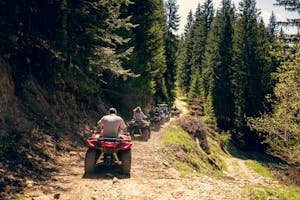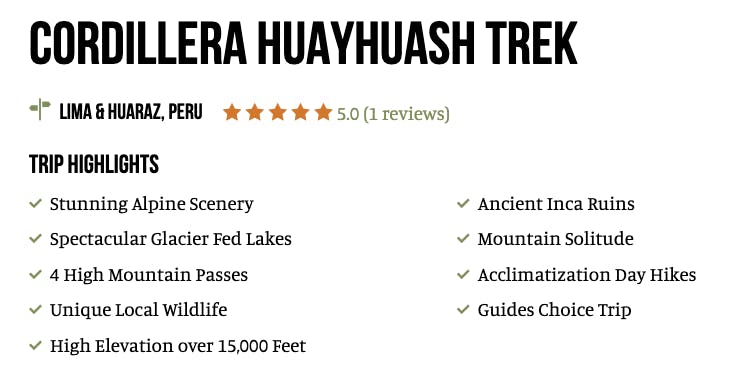- Business Management Tips
- Digital Marketing
- Industry Insights
The Trust Factor: Instill Trust in Your Customers & Boost Your Bottom Line
All Skill Levels
Join hundreds of other operators and REGISTER NOW for Spark 2024 New Orleans October 13-15th!

Multi-day tours are exciting for guests and tour operators, with options to enjoy diverse itineraries, meet new people, and try multiple activities over the course of several days.
For guests, multi-day tours offer hassle-free travel, since things like accommodations, activities, and meals have been pre-arranged. For tour operators, multi-day tours are a chance to expand your offerings, increase revenue, and help your tour guides earn better tips.
If you’re thinking about running a multi-day tour, there’s a lot of research and planning involved before you can start marketing the experience and taking bookings. This guide covers the top considerations you’ll want to make before you can hit the ground running with your next big tour idea.
Packaged multi-day tours have pre-set itineraries and travel dates. They are typically escorted or guided tours, for example, a seven-day backpacking trip in a national park. However, they can be unescorted as well. For instance, you could offer a resort package to your location with several tours and activities included that are booked at the customers’ convenience. Packaged tours may or may not include airfare, but they typically do include accommodations and some meals.
Custom multi-day trips can also be arranged where you have guests fill out a form with their trip ideas and preferences and you help them create a custom itinerary.
A big benefit of multi-day packaged tours is that once guests secure that tour package, they’re less likely to cancel last-minute because there is a greater sense of commitment. This type of tour is also perceived as more valuable when guests start to factor in the logistics of transportation and value-added activities, things that they don’t want to book on their own. In fact, most travelers will pay extra to have someone plan these details for them.

Before you jump into the planning stages for your new tour, you’ll need to research your area and take a look at your resources to determine whether this type of experience will work for your business. There are so many details that go into successfully executing a multi-day tour, from transportation and accommodations to meals, activities, and preparing for every last-minute change or emergency.
The key to success is having well-established connections in your area. Consider partnering with hotels, restaurants, and other tour operators to ensure your guests have the time of their lives without being privy to the behind-the-scenes details that make your tour run smoothly. Packaging your tours with fellow tour providers in the area not only helps you increase revenue.but also creates a sense of community
 Pro Tip: If any other tour operators run multi-day tours or other package experiences in your area, spend time researching these competitors to understand the ins and outs of this type of tour. Pay attention to how they write the itinerary, where the tours go, and items that are included vs. paid for out of pocket by guests.
Pro Tip: If any other tour operators run multi-day tours or other package experiences in your area, spend time researching these competitors to understand the ins and outs of this type of tour. Pay attention to how they write the itinerary, where the tours go, and items that are included vs. paid for out of pocket by guests.
On multi-day tours with a set itinerary, guests expect their days to be completely mapped out. They want to know what time to meet for breakfast, when they’ll depart for a certain location, how long they’ll have at a given place or doing a given activity, and how much free time they’ll have. Booking tours like this gives tourists peace of mind and alleviates the stress of having to completely plan a vacation.
You need to organize your experiences with these expectations in mind, with every minute of the day accounted for. It’s also essential to plan for unforeseen complications. For example, what would you do if the bus broke down? Do you have a backup plan in case a snowstorm forces you to change the tour route? It’s issues like these that make multi-day tours so complex in their planning and execution.
At a minimum, you should consider the following:
Tour packages are popular because of their ability to save guests money. Emphasize adding value so guests can easily compare your package with others in the area. Perhaps show an itemized list of how much an accommodation or activity typically is compared to the cost of it on the multi-day tour. Packaging tours with transportation, accommodation, and even flights takes care of the bulk of the work, making your multi-day experience even more valuable.
Identify who you’re creating the tour for. Is it geared toward adventure-seekers? Families? Solo travelers who want to meet new people during a group experience? Your tour description should speak to this group and address their travel desires. You can also feature more than one tour that caters to a specific target audience.

The key to advertising your multi-day tour is nailing the activity description. Tours of this nature are a significant investment for guests, and they want to know every detail of the itinerary to be sure they’re getting their money’s worth. Here are some points that are absolute musts in your itinerary:
Creating a theme for your tour is an excellent way to advertise. Check out these examples:
These are just a few ideas to get you started. No matter what kind of tour you’re envisioning, a well curated package experience will appeal to bookers and can help set your business apart from others. Be a resource for your tour guests and establish yourself as an expert in your area and industry with careful tour descriptions and all-inclusive, authentic experiences. Get more tour planning ideas in our industry insights guides.